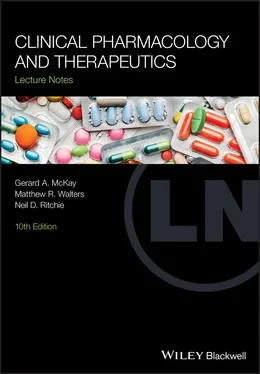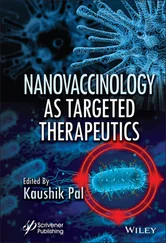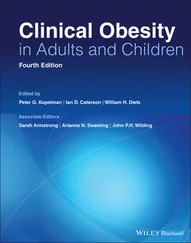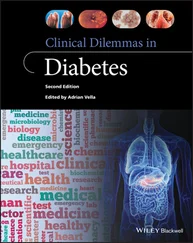Principles of drug action (pharmacodynamics)
Pharmacological agents are used in therapeutics to:
1 Alleviate symptoms, for example:Paracetamol for painGTN spray for angina
2 Improve prognosis – this can be measured in a number of different ways – usually measured as a reduction in morbidity or mortality, for example:Prevent or delay end‐stage consequences of disease, e.g. anti‐hypertensive medication and statins in cardiovascular disease, levodopa in Parkinson's diseaseReplace deficiencies, e.g. levothyroxine in hypothyroidCure disease, e.g. antibiotics, chemotherapy
Some drugs will both alleviate symptoms and improve prognosis, e.g. beta‐blockers in ischaemic heart disease. If a prescribed drug is doing neither, one must question the need for its use and stop it. Even if there is a clear indication for use, the potential for side effects and interactions with any other drugs the patient is on also needs to be taken into account.
Mechanism of drug action
Action on a receptor
A receptor is a specific macromolecule, usually a protein, situated either in cell membranes or within the cell, to which a specific group of ligands, drugs or naturally occurring substances (such as neurotransmitters or hormones) can bind and produce pharmacological effects. There are three types of ligands: agonists, antagonists and partial agonists.
An agonistis a substance that stimulates or activates the receptor to produce an effect, e.g. salbutamol at the β 2‐receptor.
An antagonistprevents the action of an agonist but does not have any effect itself, e.g. losartan at the angiotensin II receptor.
A partial agoniststimulates the receptor to a limited extent, while preventing any further stimulation by naturally occurring agonists, e.g. aripiprazole at the D2 and 5‐HT1a receptors.
The biochemical events that result from an agonist–receptor interaction to produce an effect are complex. There are many types of receptors and in several cases subtypes have been identified which are also of therapeutic importance, e.g. α‐ and β ‐adrenoceptors and nicotinic and muscarinic cholinergic receptors.
Enzymes, like receptors, are protein macromolecules with which substrates interact to produce activation or inhibition. Drugs in common clinical use which exert their effect through enzyme action generally do so by inhibition, for example:
1 Aspirin inhibits platelet cyclo‐oxygenase
2 Ramipril inhibits angiotensin‐converting enzyme
Drug receptor antagonists and enzyme inhibitors can act as competitive, reversible antagonists or as non‐competitive, irreversible antagonists. Effects of competitive antagonists can be overcome by increasing the dose of endogenous or exogenous agonists, while effects of irreversible antagonists cannot usually be overcome, resulting in a longer duration of the effect.
Action on membrane ionic channels
The conduction of impulses in nerve tissues and electromechanical coupling in muscle depend on the movement of ions, particularly sodium, calcium and potassium, through membrane channels. Several groups of drugs interfere with these processes, for example:
1 Nifedipine inhibits the transport of calcium through the slow channels of active cell membranes
2 Furosemide inhibits Na/K/Cl co‐transport in the ascending limb of the loop of Henle
Drugs used in cancer or in the treatment of infections may kill malignant cells or micro‐organisms. Often the mechanisms have been defined in terms of effects on specific receptors or enzymes. In other cases, chemical action (alkylation) damages DNA or other macromolecules and results in cell death or failure of cell division.
Dose–response relationship
Dose–response relationships may be steep or flat. A steep relationship implies that small changes in dose will produce large changes in clinical response or adverse effects, while flat relationships imply that increasing the dose will offer little clinical advantage ( Figure 1.1).
In clinical practice, the maximum therapeutic effect may often be unobtainable because of the appearance of adverse or unwanted effects: few, if any, drugs cause a single pharmacological effect.
The concentration–adverse response relationship is often different in shape and position to that of the concentration–therapeutic response relationship. The difference between the concentration that produces the desired effect and the concentration that causes adverse effects is called the therapeutic index and is a measure of the selectivity of a drug ( Figure 1.2).
The shape and position of dose–response curves for a group of patients is variable because of genetic, environmental and disease factors. However, this variability is not solely an expression of differences in response to drugs. It has two important components: the dose–plasma concentration relationship and the plasma concentration–effect relationship.

With the development of specific and sensitive chemical assays for drugs in body fluids, it has been possible to characterise dose–plasma concentration relationships so that this component of the variability in response can be taken into account when drugs are prescribed for patients with various disease states. For drugs with a narrow therapeutic index, it may be necessary to measure plasma concentrations to assess the relationship between dose and concentration in individual patients (see Section ‘ Therapeutic drug monitoring’ later).
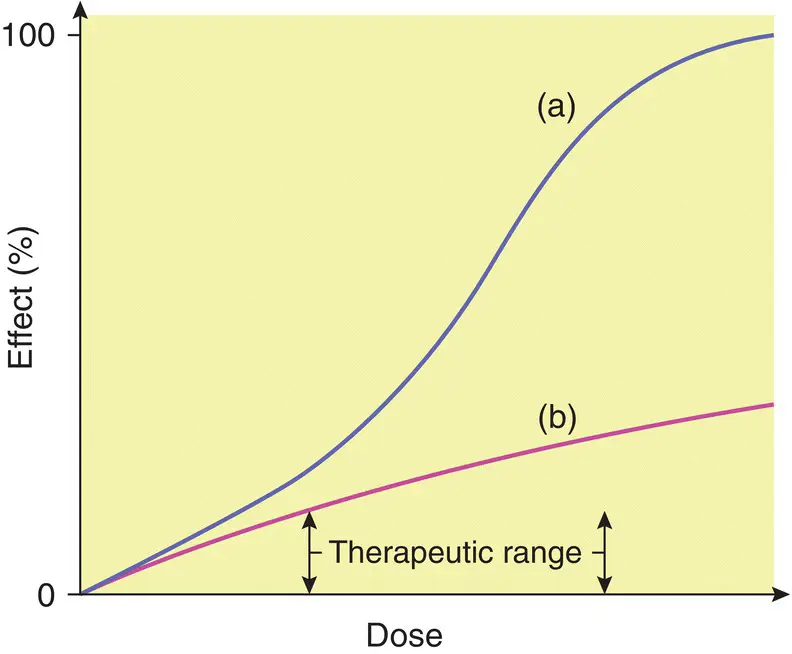
Figure 1.1 Schematic examples of a drug (a) with a steep dose– (or concentration–) response relationship in the therapeutic range, e.g. warfarin an oral anticoagulant; and (b) a flat dose– (or concentration–) response relationship within the therapeutic range, e.g. thiazide diuretics in hypertension.
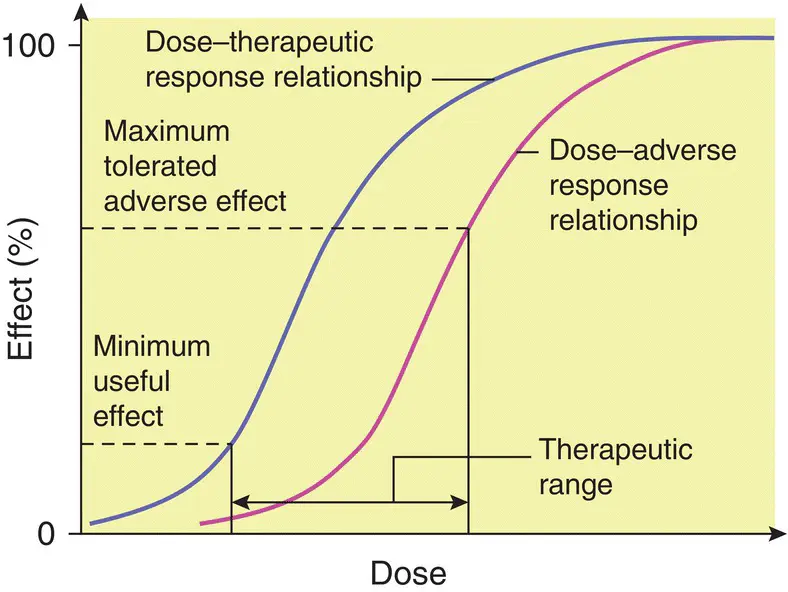
Figure 1.2 Schematic diagram of the dose–response relationship for the desired effect (dose–therapeutic response) and for an undesired adverse effect. The therapeutic index is the extent of displacement of the two curves within the normal dose range.
Principles of pharmacokinetics
Absorption
Drug absorption after oral administration has two major components: absorption rate and bioavailability. Absorption rate is controlled partially by the physicochemical characteristics of the drug but in many cases is modified by the formulation. A reduction in absorption rate can lead to a smoother concentration–time profile with a lower potential for concentration‐dependent adverse effects and may allow less frequent dosing.
Bioavailability is the term used to describe the fraction of the oral dose that is absorbed into the systemic circulation. It can range from 0 to 100% and depends on a number of physicochemical and clinical factors. Low bioavailability may occur if the drug has low solubility or is destroyed by the acid in the stomach. Changing the formulation can affect the bioavailability of a drug and it can also be altered by food or the co‐administration of other drugs. For example, antacids can reduce the absorption of quinolone antibiotics, such as ciprofloxacin, by binding them in the gut. Other factors influencing bioavailability include metabolism by gut flora, the intestinal wall or the liver.
Читать дальше
